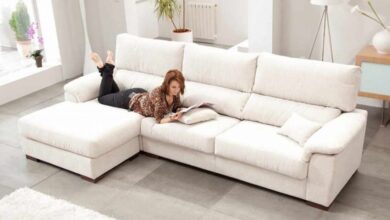How to remove moisture?

Humidity levels in the home must be properly monitored and cared for, to avoid aesthetic, structural or even health problems. Sleeping with humidity in the room can be more harmful than many people think, so it is necessary to know how to treat it and also how to prevent it.
How to remove moisture from walls inside homes is a much more popular search on the internet than you might think, especially considering that Spain is a country that can experience temperature differences due to seasonal change.
Consequently, the use of air conditioners and heating systems is very common in homes, so humidity is often a recurring problem. If you want to learn how to remove humidity in your house, here you will find tricks for it and also what you should do to avoid it.
Vinegar
The uses that can be given to vinegar at home are many and the treatment to remove moisture is no exception.
If you want to remove damp stains on the wall, you will need a spray bottle, ½ cup of white vinegar and ¼ cup of water. Pour the ingredients into the bottle and shake it to mix.
Then, spray the diluted vinegar on the damp spots you see on the walls or ceiling and let it dry naturally. If possible, open the windows and doors, to allow air to circulate inside the room, so you can remove the moisture from the wall more easily.
Salt
Salt is one of the best known and easiest to use homemade moisture absorbers. To take advantage of its effects and remove humidity from the room, you will need 1 kilogram (sea salt is also valid) and a flat container. Pour the salt into the container and simply leave it in a corner of the room for 24-48 hours .
Baking soda
One method you can try to remove moisture from walls is by applying baking soda. You can find it in pharmacies or also in supermarkets and it is quite affordable.
Considered one of the best household moisture absorbers, baking soda can be poured directly onto mold stains . Rub a little to penetrate and let it sit for about 2 hours. After some time, remove it with a soft bristle brush.
Besides, you can also take advantage of it with the salt method and have several containers inside the drawers and cabinets, to avoid excess humidity or remove humidity from a particular room.

dehumidifiers
These teams are, par excellence, one of the most efficient tools to remove moisture. With them you can even program the ideal humidity at home, taking into account that the recommended temperature during the day is between 50% and 60% and during the night it decreases to levels between 40% and 60%, to guarantee a good rest.
You can buy dehumidifiers of many brands, sizes and models, but we advise you to take into account the characteristics of your home and, especially, your room, to choose one with the appropriate capacity.
Air-conditioning
An AC unit is capable of absorbing humidity in a room efficiently if care is taken to install the model with adequate capacity, given that, if it is too small, it will not be able to absorb the necessary amount of air and if it is too large, the humidity level could be increased by the cold.
How to avoid humidity at home?
There are several causes that can generate an excess of environmental humidity in the home, so, apart from knowing how these levels can be regulated, it is also convenient to take into account how to prevent this problem from reoccurring after having treated it:
- Ventilation
One of the most common recommendations to prevent humidity levels from skyrocketing in rooms is to take care of the ventilation in all of them. This, apart from letting bad odors out, also lets in sunlight to remove humidity in the house.
- Heating
In case you have a heating system at home, it is advisable to avoid activating it at a temperature that exceeds 20 °C, since, from there, an environment is generated with the ideal characteristics for the appearance of humidity, mainly in the walls.

- Clothing
When you want to hang your clothes, if you want to maintain ideal humidity at home, it is best to do it outside. Avoid hanging wet clothes to dry in the heat of the stove, for example, as moisture will be transmitted into the environment and accumulate on all surfaces.
- Floors
Another element that we do not advise you to have in excess in a room are plants. If you have many specimens in a closed space, the recommended humidity could be increased due to the appearance and conservation of vapors or mist. This vapor is made up of water particles in a gaseous state that, when accumulated, can generate humidity in all types of structures, furniture and others.
- Painting
Finally, another important aspect when we ask ourselves how to avoid humidity in the house is to choose the products that will finish the walls. When choosing the paint with which you are going to cover them, we advise you to choose one that is anti-fungal and anti-humidity, since they are hydro-repellent. This will prevent you from having to worry about how to remove moisture from the walls later.
Now that you know how to combat humidity problems at home, you can ensure that you guarantee a suitable environment for everyone who lives under your roof, whether you prefer to opt for more or less aggressive methods.
In addition, with the knowledge acquired to avoid excess humidity in the home, it will be possible to reduce the risk of encountering stains, damage to the walls or any other type of inconvenience before it is too late.



